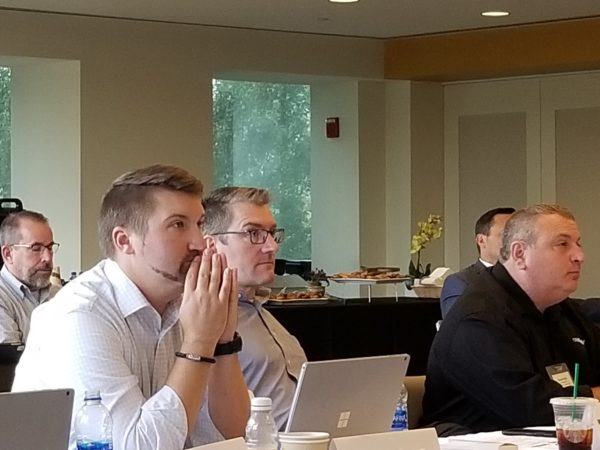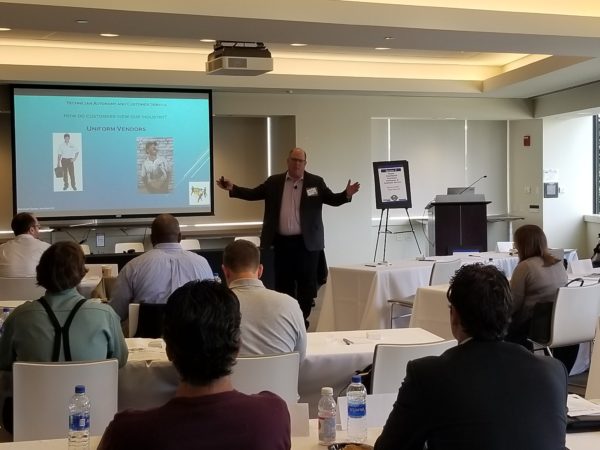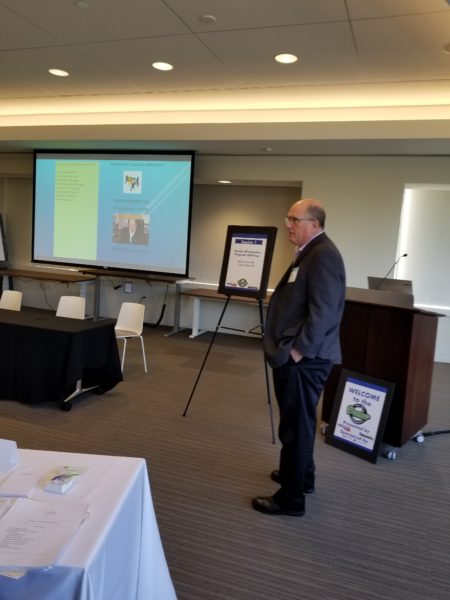I have just returned from the One-Day Dealer Conference held on September 19th in Rosemont IL. This month I’d like to devote the column to the highlights of the conference and some of the content that we discussed.
First of all, I want to thank all of those in attendance. We had a wide and varied group consisting of full line dealers, wholesalers, manufacturers, industry associations, and financial professionals. Wintrust Financial Corporation hosted the event at their facility in Rosemont IL. Intella and Panacea lift truck parts sponsored the event, and were on hand to chat with the attendees.
The purpose of the event was to provide a forum of actionable ideas and programs that dealers could go back to their dealerships and implement. The session content ran on two different education tracks. I suggested ideas on dealership aftermarket planning and execution, while Garry Bartecki chaired sessions on accounting rules, tax ramifications, fiduciary responsibilities, and ESOP options for selling your dealership. Below are the highlights of the programs presented in Track 1:
TRACK 1 – Dealer Aftermarket Operations
Dealer Aftermarket Program Offerings
 Managing the changes needed in this area of the dealership requires dealers to adopt a new paradigm regarding the equipment delivery process within the dealership. Every aftermarket opportunity starts with the delivery of a piece of equipment which will eventually need to be maintained and/or repaired. If dealers start and maintain an initiative to treat the delivery process as the focal point of the aftermarket effort, this process will take on new significance, and it will present a unique opportunity for the dealer to achieve multiple new objectives:
Managing the changes needed in this area of the dealership requires dealers to adopt a new paradigm regarding the equipment delivery process within the dealership. Every aftermarket opportunity starts with the delivery of a piece of equipment which will eventually need to be maintained and/or repaired. If dealers start and maintain an initiative to treat the delivery process as the focal point of the aftermarket effort, this process will take on new significance, and it will present a unique opportunity for the dealer to achieve multiple new objectives:
Key Points
- Dealers should create and offer multiple, unique and comprehensive MAINTENANCE ONLY programs that include all suggested OEM maintenance items at the OEM specified intervals. (Note: This would apply only to customers not already enrolled in a “full maintenance and repair” contract as part of their acquisition.
- Dealers should ensure that all of the programs offered are presented as multi-year agreements, and that service schedules are based around the estimated equipment duty cycle and application.
- The sale of standard PM contracts should be approached as a “fallback” service proposal, instead of the initial offering.
- Equipment warranty coverages should be explained in person and in detail on the day of delivery. This discussion should include warranty limitations and qualifiers. Dealers should create documents that can be signed by the customer affirming a complete understanding of warranty exclusions.
- The delivery process should be used as an opportunity to sell accessories and special services (“on purpose”). Accessories don’t sell themselves. The delivery process is the perfect time to suggest the addition of these items.
Field Based Technician Autonomy and Customer Service
Dealers say that they want to get more done with existing resources and manpower. The problem with leveraging existing resources is that it many times requires a dealer to rethink long standing policies that actually prevent employees from being productive.
Key Points
- Dealers should construct internal mechanisms that control van inventory and pricing of common maintenance and repair items, so that field-based technicians can quote, close and complete field-based repairs while they are onsite at a customer location.
- Development of a field technician service menu program will require the following things:
- Analysis of the population of equipment being serviced
- Anticipation of the needed repairs based on the individual technicians’ “opportunities”
- Investment in van inventory that mirrors the opportunities for each technician.
- Training for technicians on how to identify, quote, sell and complete additional work “on the spot”.
This is not as easy as it sounds. In the session we covered the goals, tools, resources and administrative functions necessary to create a robust service menu program, including:
- Analysis and assignment of PM’s to individual techs (or vans)
- Importance of ALL TECHS performing PM servicesDave Baiocchi
- How to change van stock metrics and mindset from “historical turns” to “opportunity to sell”.

We discussed the benefits of instituting programs of this nature, including:
- Retail revenue growth
- Labor efficiency and productivity growth
- Administrative relief
- Customer service and first-time fix improvement
- Rental repair efficiency
- Fuel and service truck maintenance reduction
Dealer parts planning
The overwhelming majority of dealers do little strategic planning when it comes to the aftermarket side of their business. In many cases dealers have bought into the falsehood that there is not much that can be done to enhance forecasted sales of aftermarket items, as these departments operate only in proportion to equipment sales activity.
This viewpoint is in error, as growing revenues can be forecasted by development of dealer-initiated programs, proper use of buying power, and planned campaigns to illicit the sale of accessories, high wear items, and safety products.
Key Points
- How to limit insufficient or incorrect inventory on the shelf
- How to capitalize on OEM returns processing to keep inventory fresh and moving
- Creating a vendor qualification process in order to manage the consolidation of vendors
- How to actually PLAN and set reasonable goals for an increase in the aftermarket business
- How to use equipment sales history to determine the OEM parts inventory “sweet spot”
- How to strategically execute short term parts sales campaigns using employees in the CSS Sales department as well as parts countermen, and field service technicians
- How to “pair” inventory purchases with campaign goals (using your buying power)
I will leave it to Garry Bartecki to highlight the Track 2 sessions in his column this month. I will say however that the compliance requirements of reporting your dealer revenue stream have changed, and cannot be ignored.
 Likewise, sales tax requirements have evolved. The US Supreme court has further affirmed that the SHIPMENT address where equipment is being utilized (whether rented or purchased) governs the sales tax liability. It’s important to understand and set up controls within your accounting system to comply with these changes.
Likewise, sales tax requirements have evolved. The US Supreme court has further affirmed that the SHIPMENT address where equipment is being utilized (whether rented or purchased) governs the sales tax liability. It’s important to understand and set up controls within your accounting system to comply with these changes.
Garry also chaired a great session on ESOP options for selling a dealership. Not all dealerships will qualify, but in the right situations, funding can be obtained for a change in ownership that has significant tax benefits, and allows long time employees to eventually gain a nice reward over time.
All in all, this One-Day Conference was a smashing success! I hope to have a chance to talk to even more dealers next year!











